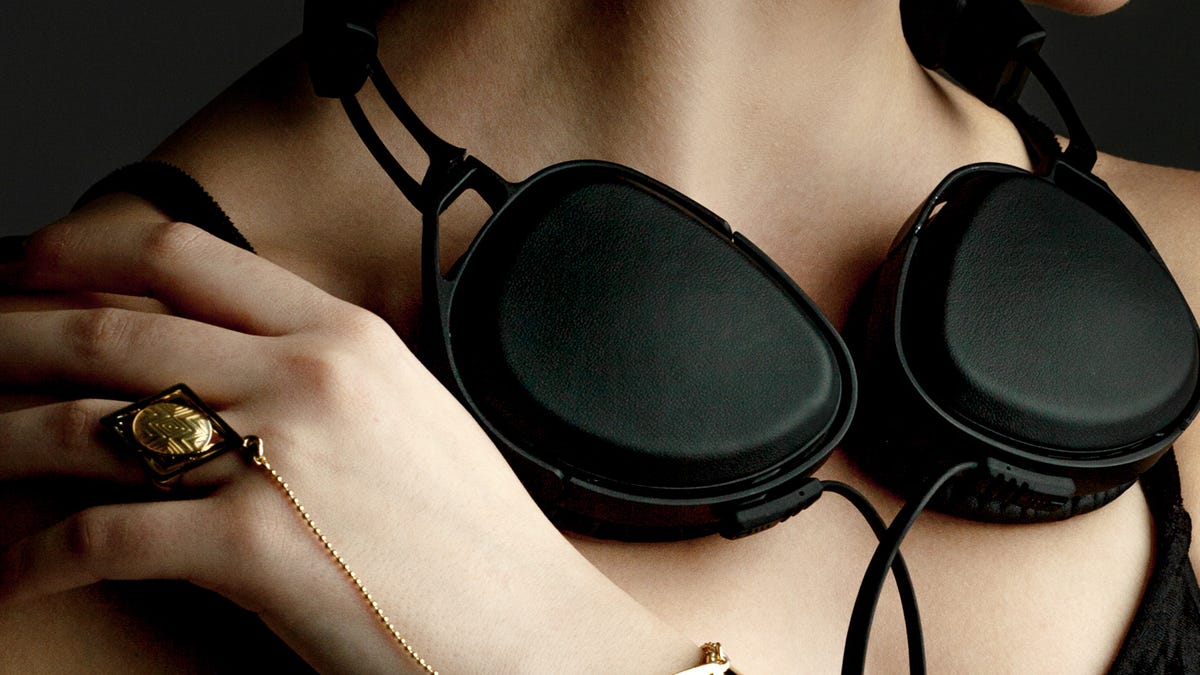Audeze Sine, a world class audiophile headphone, for a (relatively) affordable price
Here's a spectacular sounding, made in the US headphone, what's not to like?

Audeze is a Costa Mesa, California-based manufacturer of high-end headphones. The top model, the LCD-4, runs a cool $4,000 (£3,299 and AU$6,399 in the UK and Australia, respectively), but the latest Audeze, the Sine ($449, £399, AU$699) is their most affordable 'phone yet.
Frankly, I was more than a little surprised that Audeze could make headphones as beautifully built as the Sine in California, and still sell it for this kind of money. As for the sound quality, let's just say for now the Sine lives up to Audeze's very high standards.
Audeze Sine headphones
More good news, Sine is the smallest and lightest (8.1 ounces/230 grams) Audeze headphone, and thanks to its 20-ohm impedance, the easiest to drive. The Sine on-ear, closed-back design features planar-magnetic drivers, similar to the ones used in Audeze's more expensive headphones.
Sine comes with a 48-inch (1.2-meter) cable fitted with sharply angled 3.5mm plugs that fit into correspondingly angled jacks on the Sine's earcups. The cable feels unusually sturdy; it can really take a beating, and always remains tangle-free.
There's also an optional Cipher cable with an Apple Lightning connector for use with iPhones. The cable has a build-in, high-quality digital converter that bypasses the iPhone's converter. The Cipher cable also has a built-in headphone amplifier, and it will be the cable of choice if the rumors of Apple abandoning the 3.5mm headphone jack for the iPhone 7 come true. The Cipher cable uses a Lightning plug instead of the 3.5mm plug.
While I listened to "The Revenant" soundtrack with and without the Cipher cable on my iPhone 6S, the difference was most audible with music like this that has a lot of subtle detailing and "air," and the thundering low bass on the score had more weight with the Cipher cable in play. Can't say the difference was huge, but I preferred the sound with the Cipher cable.
The Sine's angled plug and ear cup
The Sine's comfort was good, but its slightly high head clamping pressure started to feel uncomfortable after an hour or so, but the pressure wasn't high enough to keep the Sines in place if you jump around or dance. It's a closed-back design, but isolation from external noise was only fair.
While writing this review I stumbled upon Icelandic composer Anna Thorvaldsdottir's spellbinding "Aerial" album. Her music is peaceful, yet massively complex, with textures, subterranean rumblings, plucks, drones and impossible-to-identify sounds that sprawl over a vast soundscape. Thorvaldsdottir's music could be deemed ambient, and the Sines put me in her space.
Next, I compared Sine with a set of Hifiman HE400S ($299, £219, AU$419) open-back headphones. Big differences were immediately obvious; the HE400S' sound is more open, spacious, and less stuck inside my head than the Sine, but the HE400S is a bigger, somewhat bulkier over-the-ear design. The Sine pulls music in closer, so instruments and vocal sound more immediate. Beyonce's "Lemonade" album sounded brighter/clearer, with tighter, remarkably potent bass on the Sine, but Beyonce's vocals sounded more natural on the HE400S. Sine's build quality feels better, with more of a luxury vibe than the HE400S. Both headphones are exceptional, and sound better than any Beyerdynamic, Grado or Sennheiser headphone I've heard for the price of a Sine or HE400S.
I also spent some time comparing the Sine with the next model up in Audeze's line, the EL-8 ($699, £599, AU$1,149). It's a much larger, over-the-ear design, and while it's heavier than the Sine I found the EL-8 more comfortable. Dawn of Midi's "Live" album sounded very live, this piano, bass and drums jazz trio's music is sparsely arranged, with jittery, continuously evolving rhythmic patterns. The EL-8 sounded bigger, more spacious, richer, yet equally clear. The closed-back EL-8 has far superior isolation from external noise than the Sine.
David Carnoy's CNET review summed up the Sine's appeal this way: "The Audeze Sine is a fantastic headphone that will appeal to anyone looking for truly high-end sound that isn't incredibly expensive." I agree.

